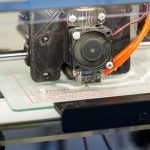3D Printed Material Controlled by Magnets
Just when you think 3D printing couldn’t get any more interesting, a team of engineers from MIT’s Department of Mechanical Engineering and Department of Civil and Environmental Engineering joined forces with New Jersey Institute of Technology to create 3D-printed structures that can be manipulated by magnets to move and shift shapes.
What is 3D Printing?
If you aren’t sure what 3D printing is, it’s a process of layering materials to produce a three-dimensional object from a digital file. This process is typically used for rapid prototyping and additive manufacturing. What’s fascinating about 3D printing is that it allows you to create functional, complex structures that use less material than traditional manufacturing methods.
How the Magnetized 3D Structures Are Created
The 3D-printed structures were created using a recently developed 3D-printable ink infused with tiny magnetic particles. Researchers fitted an electromagnet around the nozzle of a 3D printer. This electromagnet causes magnetic particles to form into a single orientation as the ink travels through the nozzle to print the structures. Controlling the magnetic orientation of various sections within in the structures allows the researchers to produce objects that respond to an external magnetic field.
How the Magnetized 3D Structures Work
In order to create the structures, the MIT team developed a physical model that helps predict how printed structure will shift under a magnetic field. Both the predictive model and the printing platform used by researchers allows users to design, validate, and print their own structures.
The magnetic structures printed by the team include a smooth ring that wrinkles, a long tube that squeezes shut, a sheet that folds itself, and a spider-like structure that crawls, rolls, jumps, and snaps together fast enough to catch a ball. As suggested by the study published in Nature, these pieces have applications in flexible electronics, soft robotics, and biomedicine. Specifically, the researchers on this project believe that their 3D-printed structures would benefit the biomedical field due to the fast responsive speed of the magnetized piece.
For more up-to-the-minute magnetic stories, visit our blog and make sure to check out the newest products in our online catalog today!

